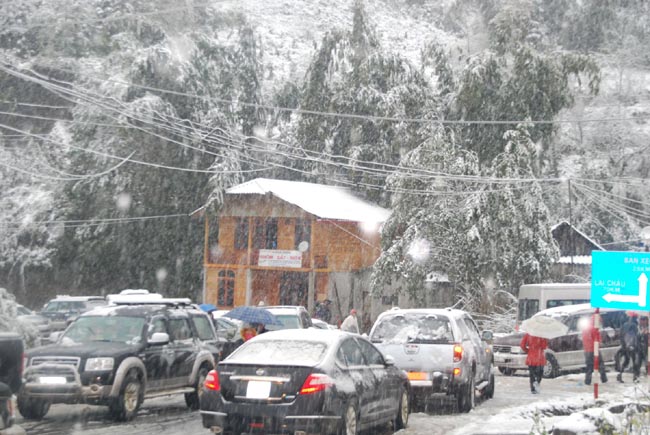First things that pop in your head when you think of Southeast Asia are: beaches, jungles, warm weather, green rain forests, you know, general images of the tropics. Many would not even consider thinking of snow. But is there really snow in Southeast Asia? Let’s find out.
Kachin State, Myanmar
Myanmar has seen rapid transformation since the country went down the economic liberalisation route back in 2011. Getting to the country’s largest city, Yangon, is as easy as paying for an eVisa, printing out the approval letter and hopping on a plane.

However, to get to the mountainous northern region, which is part of the tail-end of the Himalayas, is an arduous journey that consumes time and guarantees plenty of adventure, not to mention some areas remain off limit to foreigners.
Putao is the closest town to some of the highest snow-capped peaks in Southeast Asia, reaching heights above 5000m. The only way to Putao is to join a trekking tour and fly there.
Cartenz Pyramid, Papua, Indonesia
Carstensz Pyramid or Puncak Jaya (4,884 m) is the highest summit of Mount Jayawijaya or Mount Carstensz in the Sudirman Range of the western central highlands of Papua Province, Indonesia (within Puncak Jaya Regency). Other summits are East Carstensz Peak (4,808 m), Sumantri (4,870 m) and Ngga Pulu (4,863 m). Other names include Nemangkawi in the Amungkal language, Carstensz Toppen and Gunung Soekarno.
At 4,884 metres above sea level, Puncak Jaya is the highest mountain in Indonesia, on the island of New Guinea (which consists of the Indonesian West Papua region plus Papua New Guinea), on the continent of Australia (which consists of New Guinea, the country of Australia, Timor, other islands, and submerged continental shelf), and in Oceania, as well as the 5th highest mountain in political Southeast Asia.
It is also the highest point between the Himalayas and the Andes, and the highest island peak in the world. Some sources claim Papua New Guinea's Mount Wilhelm, 4,509 m , as the highest mountain peak in Oceania, on account of Indonesia being part of Asia (Southeast Asia).
Puncak Jaya was named "Carstensz Pyramid" after Dutch explorer Jan Carstenszoon who first sighted the glaciers on the peak of the mountain on a rare clear day in 1623. The sighting went unverified for over two centuries, and Carstensz was ridiculed in Europe when he said he had seen snow near the equator.
Although the massif of the Snow Mountains (Pegunungan Maoke in the local language) is not too high, and it lies 4 degrees south of the equator, it contains four relatively large glaciers. The largest of them is not the Carstensz Glacier, but Meren Glacier which fringes the Nga Pulu peak (4862 m). And where does the name Snow Mountains come from" There are not only glaciers on the summits, but the reason is also the fact that snowing is not unusual there. Tropical snow storm often bring snow to areas situated as high as 4000 m.
Sa Pa, Vietnam
The up-and-coming tourist town in the north-west of Vietnam dominated by the Notre Dame Cathedral is the winter playground for both Vietnamese and an increasing number of foreign tourists.

Snowfall has been recorded almost annually, particularly in months of December and January when the mercury is at its lowest.

Salivating after views of snow dusting on terraced paddy fields? You’ll find it here.



















